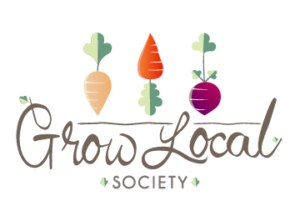Here at the Coquitlam Farmers Market we are all about local, seasonal and sustainably grown produce. What better way to celebrate the summer months than a fresh take on some familiar foods! This week’s topic: Swiss chard.

Did You Know?
Did you know Swiss chard is closely related to beets? The main difference between the two is that beets are grown for their roots while Swiss chard is harvested for its leaf.
Swiss chard is full of nutrients such as Vitamin A, K and C. This vegetable can be eaten raw or cooked with many choosing the later because its bitter taste is more subtle this way. Thanks to these nutrients and more, Swiss chard is known to improve bone, brain and heart health.
Swiss chard is in season in South West British Columbia from September to November! Make sure you stop by the market this Sunday to try some of the province’s best!
Recipe of the Week
Sautéed Swiss Chard
Courtesy of MARTHA STEWART LIVING
Ingredients:
3 pounds red Swiss chard
1 tablespoon olive oil
4 thinly sliced garlic cloves
2 teaspoons sugar
1 tablespoon red-wine vinegar
Coarse salt and ground pepper
Directions:
Step 1- Rinse Swiss chard well. Trim tough ends; slice stalks about 3/4 inch thick. Slice leaves about 1 inch thick.
Step 2- In a Dutch oven over medium heat, warm olive oil. Cook garlic until fragrant, 1 to 2 minutes.
Step 3- Stir in stalks; cook, stirring, until slightly soft, 5 to 6 minutes.
Step 4- Add half the leaves; sprinkle with 1 teaspoon sugar. Cover; cook until wilted, about 4 minutes. Add remaining leaves; sprinkle with another teaspoon sugar. Cover; cook, tossing occasionally, until leaves are tender, 8 to 10 minutes.
Step 5- Uncover; cook until liquid has evaporated, about 2 minutes. Stir in red-wine vinegar; season with coarse salt and ground pepper.
Ingredients at the Market
Swiss chard: Forstbauer Farms, Langley Organic Growers
Red- Wine Vinegar: Red Barn Plants & Produce
Other Greens and Vegetables: Amazia Farm, Floralia Growers, Forstbauer Farms, Langley Organic Growers, Never Say Die Farm, Ripple Creek Organic Farm, Shen’s Farm, Wah Fung Farm
Steps on How To Grow
Swiss Chard Planting 101:
Step 1- Swiss chard does well in both warm and cool environments. Mix 1 cup of 5-10-10 fertilizer into the soil for every 20 feet of single row. For fall harvest, plant chard seeds again about 40 days before the first fall frost date.
Step 2- Plant the seeds one half to three quarters of inch deep in a well-drained space.
Step 3- Place the seeds about 18 inches apart in single rows or 10 to 18 inches apart in wide rows. This will allow you to sow eight to ten seeds per foot of row.
Step 4- When the plants have reached about three to four inches tall, thin them out so that they are four to six inches apart. You may want this space to be larger if you plants are larger.
Step 5- Ensure you water the Swiss chard are watered often during dry spells. This is especially important in the summer.
Note: You can add mulch to help the plants maintain moisture.
Step 6- Make sure the plants do not become overgrown. When this happens, they lose their flavour.
Step 7- Harvest your Swiss chard when the plants are about six to eight inches tall. Cut off the outer leaves one to a half inches above the ground with a sharp knife. This will help new leaves grow and provide another harvest.
Swiss Chard in B.C.
It is believed Swiss chard was introduced to North America by colonists who wanted another variety of green in their diet.
Did you know that Swiss chard is in fact not native to Switzerland? The chard was named after Swedish botanist, Koch, who gave it its scientific name.
There are dozens of farmers who produce Swiss chard in this province and some of them you can find at the Coquitlam Farmers Market! This plant thrives in both our warm and cooler seasons making it an easy crop to grow.
